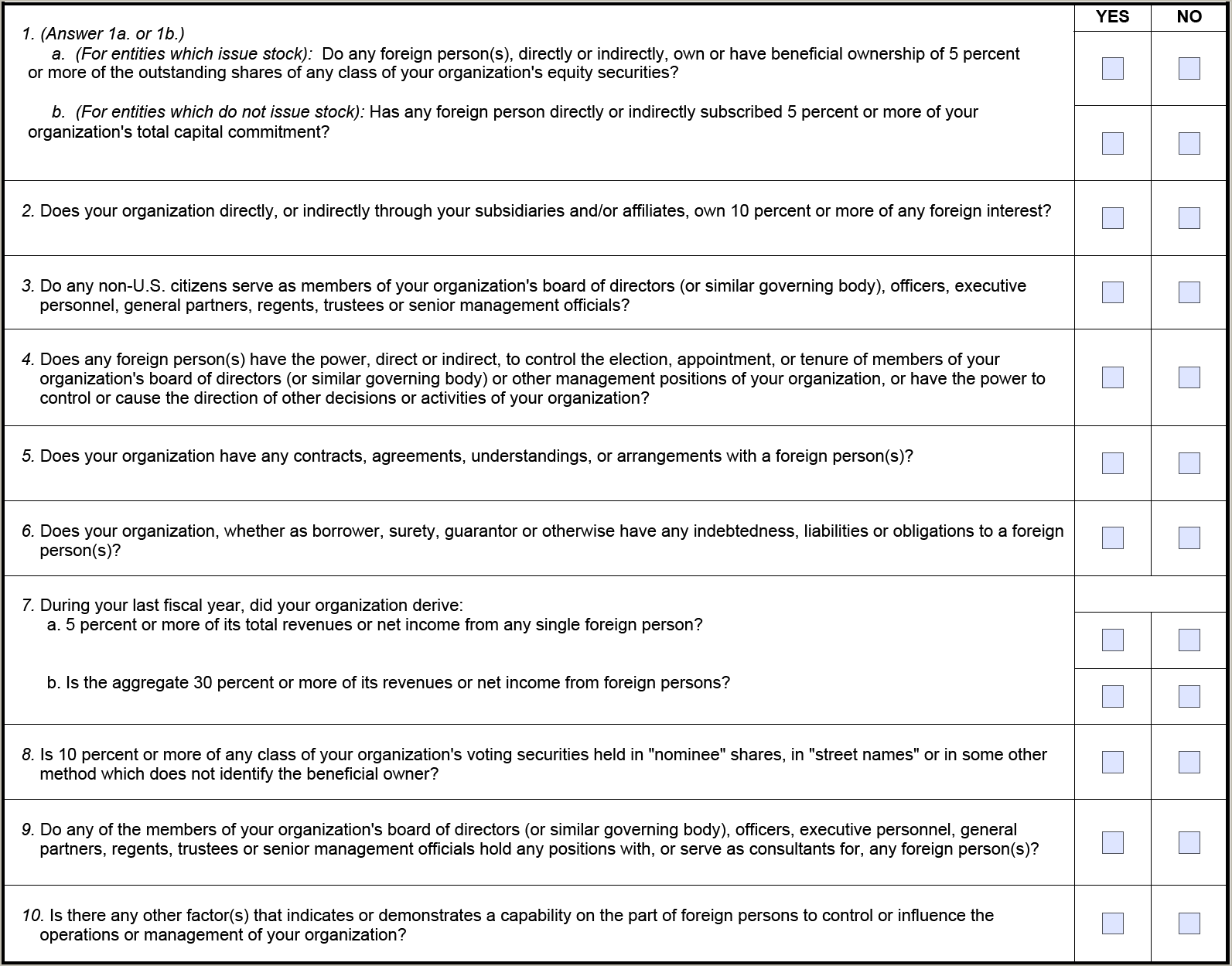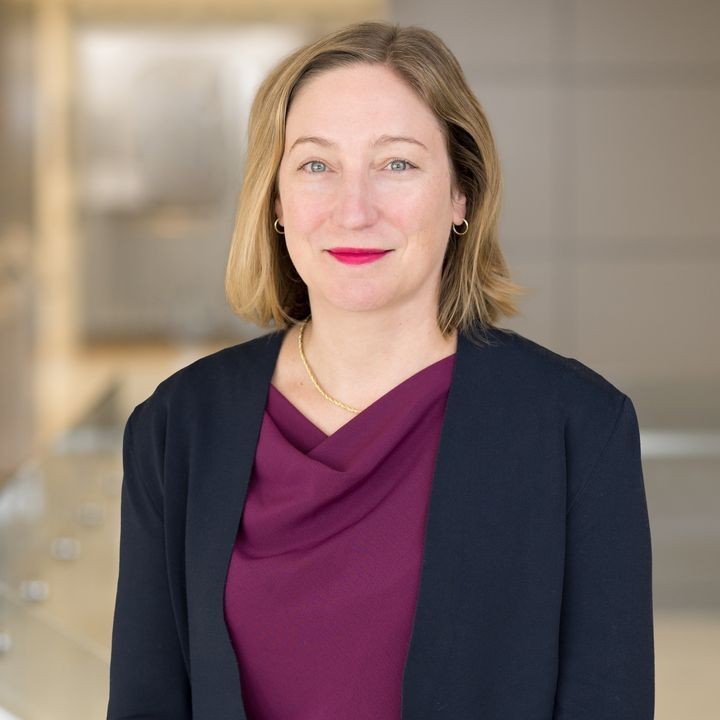New SF-328 Released and Embedded Guidance Seeks More Information Up Front
Client Alert | 26 min read | 05.16.25
On May 12, 2025, the Defense Counterintelligence and Security Agency (DCSA) released a new SF-328[1] consisting of 9 questions and 6 pages of instructions that detail the types of supporting documentation requested and identify information required by different responding entities (e.g., corporate, non-profit, academic, etc.). With this SF-328, DCSA is seeking certain frequently requested information and documents with initial SF-328 submissions rather than obtaining these documents through communications or revised SF-328 submissions. Additionally, when completed, the new SF-328 is considered Controlled Unclassified Information (CUI).
The form now consists of 9 questions rather than 10 as shown below[2]:
May 2025 SF-328
November 2018 SF-328

The new SF-328 expressly states that the form is authorized for use in the National Industrial Security Program, to carry out Section 847 of the 2020 NDAA[3], the DoD Enhanced Security Program, the DoD Small Business Innovation Research and Small Business Technology Transfer (SBIR/STTR) programs, and the DoD Cybersecurity Maturity Model Certification (CMMC) program. The form also acknowledges that applicable Freedom of Information Act (FOIA) exemptions will be invoked by the government to withhold the document from public disclosure when submitted by an entity in confidence and properly marked.
Key Takeaways
Cleared entities and entities that otherwise are required to submit SF-328s should consider:
- reviewing the new SF-328 to evaluate whether the company or entity has undergone changes requiring reporting under the new form and guidance; and
- beginning updates to SF-328s or initial preparations of SF-328s early, including identifying all company or entity stakeholders under the new SF-328 guidance.
Crowell is available to support preparation of the new SF-328 and related filings and further discuss questions concerning the new form.
Contacts
Insights
Client Alert | 7 min read | 12.17.25
After hosting a series of workshops and issuing multiple rounds of materials, including enforcement notices, checklists, templates, and other guidance, the California Air Resources Board (CARB) has proposed regulations to implement the Climate Corporate Data Accountability Act (SB 253) and the Climate-Related Financial Risk Act (SB 261) (both as amended by SB 219), which require large U.S.-based businesses operating in California to disclose greenhouse gas (GHG) emissions and climate-related risks. CARB also published a Notice of Public Hearing and an Initial Statement of Reasons along with the proposed regulations. While CARB’s final rules were statutorily required to be promulgated by July 1, 2025, these are still just proposals. CARB’s proposed rules largely track earlier guidance regarding how CARB intends to define compliance obligations, exemptions, and key deadlines, and establish fee programs to fund regulatory operations.
Client Alert | 1 min read | 12.17.25
Client Alert | 7 min read | 12.17.25
Executive Order Tries to Thwart “Onerous” AI State Regulation, Calls for National Framework
Client Alert | 4 min read | 12.17.25
The new EU Bioeconomy Strategy: a regulatory framework in transition









